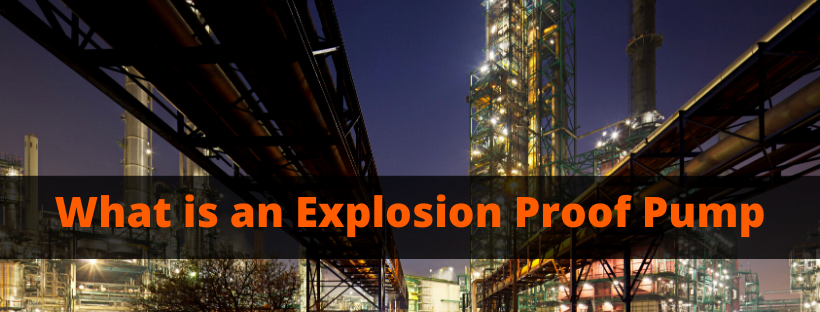The explosion-proof pump design prevents internal or external explosions by enclosing parts that could ignite either the transfer substance or the surrounding atmosphere. The Intrinsically Safe Store provides explosion-proof pumps for use in hazardous atmospheres.
Types of Pumps
Explosion-proof pumps operate on either a dynamic or positive displacement design.
The dynamic pump type uses the momentum and velocity of the fluid to generate pumping pressure. Furthermore, the pump type works well with varying flow requirements and low viscosity material. Dynamic explosion-proof pumps, like centrifugal pumps, can deliver a high flow rate in hazardous areas.
Positive displacement explosion-proof pumps use changes in cavity volume to transfer material. Thus, the positive displacement type is well suited for applications requiring a constant flow at high pressure with relatively low flow rates. This type of explosion-proof pump is ideal for hazardous areas with high viscosity fluids.
There’s a risk of an explosion whenever you’re pumping liquid out of a Hazardous facility. And, depending on the type of fluid transported out of the area, there is a significant threat to safety.
Explosion Proof Class and Division
Class II, Division 2, or Class III, Divisions 1 or 2 locations use dust-tight specifications. Whereas Class I, Divisions 1 or 2 areas use Explosion-Proof designs. Qualification for Division 1 meets Division 2 requirements.
Constructing a pump is not enough to rate for “Explosion-Proof.” A third party must approve the pump for use in explosive environments. For example, two of the more common agencies are Factory Mutual Insurance (FM) for wastewater and industrial applications and the Mine Safety and Health Administration (MSHA) for the mining, metals, and aggregate industry. For FM, there are different types of approval depending on the specific application requirements.
Class 1: Flammable gasses and vapors are present leading to a potential risk.
Division 1 signifies Hazardous materials are present under normal operating conditions. Additionally, Division 2 means gasses present an upset scenario.
Group C and D: These refer to specific gasses for which the pump or motor are rated.


























